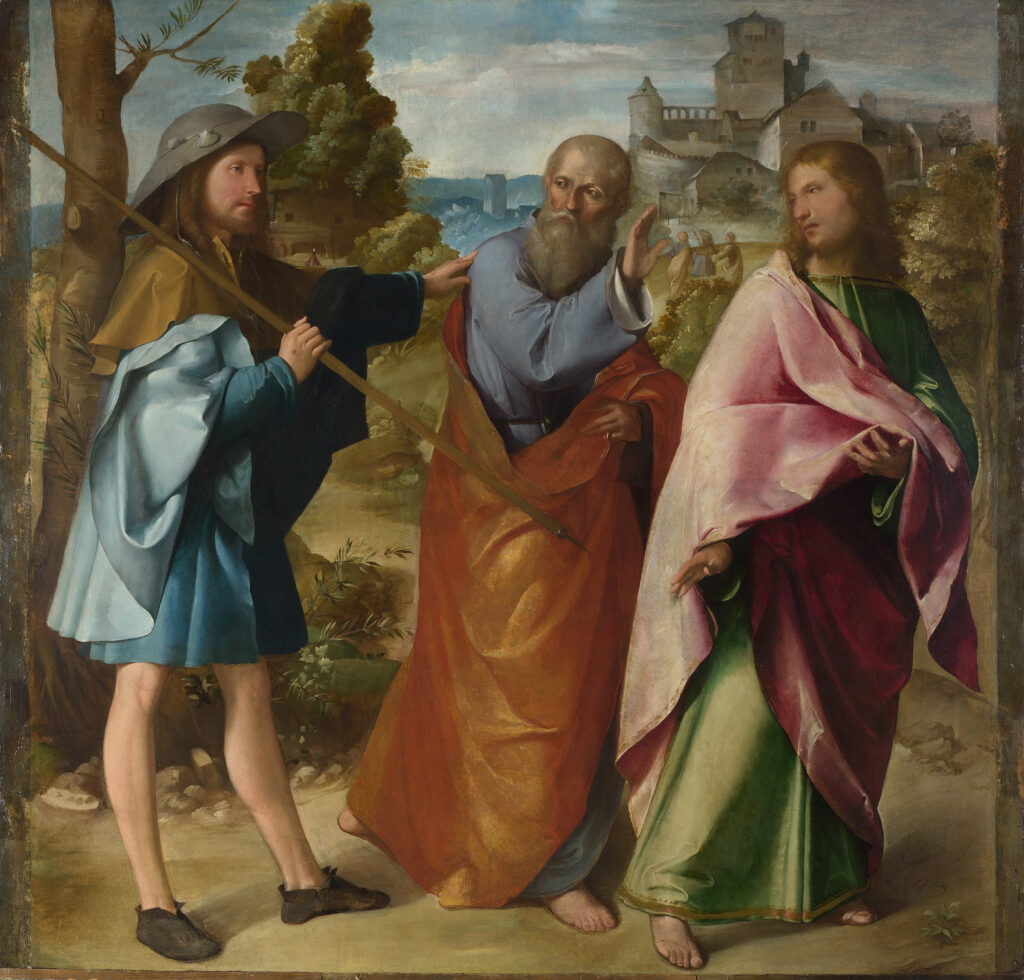This Easter Monday cantata originates from a lost secular cantata from 1718, during Bach’s Cöthen period. The original work, catalogued as BWV 66a, of which we only have the libretto, was intended to celebrate the birthday of Prince Leopold. Bach reworked the music into a church cantata for performance in Leipzig in 1724, then in 1731 and also a few years later, probably in 1735, which is the only version that survives. It’s clear that over the course of these successive revisions, Bach modified the music quite substantially.
The text of the secular work was set up as a dialog, so the anonymous librettist who took on the assignment to create the new libretto naturally also created a dialog for BWV 66, in this case between “Fear” (alto) and “Hope” (tenor). Another substantial transformation for both music and text involved taking the closing chorus of the original and making it the opening number of the new version.
BWV 66 is scored for optional trumpet (probably added for the latest Leipzig revisions), two oboes, bassoon, strings, four-part choir, alto, tenor, and bass soloists, and basso continuo.
The long and majestic first movement opens with an instrumental ritornello in which the strings alternate thematic material with the reeds (oboes/basson). Runs of fast scales represent joy and celebration, which is the object of the first section of the text. The voices of the choir come in imitatively in pairs, in different permutations. The middle section, in minor mode, transitions to deal with how Jesus drives away fear and despair. Many performers choose to use solo voices for this part. The chromatic lines are notably applied to the words “mourning”, “fear”, “despair”, which is particularly noteworthy given that the text was retrofitted to the music. Clearly there was some close collaboration between Bach and his librettist, and this is most likely one example of the music being significantly adapted to its new purpose. The opening section then returns in the “da capo”.
Next is a recitative / aria pair for the bass. The recitative is accompanied by strings, and it leads to an energetic aria with full reed band and string accompaniment. The topic of “singing a song of thanks” is a good match for the festive, rhythmic triple time dance-like aria.
The following two movements is where the dialog between “Fear” and “Hope” occurs. The 4th movement opens with a recitative for “Hope” (tenor) which resembles a sermon, describing the attitude of a Christian in front of Jesus. This leads to an arioso set as a duet, in which the text is largely the same for both voices, with minor alterations that render the lines suitable for each character (“Mein”/”Kein”, “nicht”/”noch”). Symmetrically, the movement ends with a recitative largely dominated by “Fear” (alto).
The 5th movement is an extensive aria/duet for alto and tenor, accompanied by solo violin and continuo. The text in section A still features the differences in feelings in each character via the word substitutions; however, in section B, the characters come together on the same verses. The violin line, ornamenting around the voices with insistent 16th note passages, betrays its Cöthen origins in that is seems right out of a violin concerto.
The cantata closes with a four-part chorale, added after the final movement of the secular version was moved to the beginning. Its text is the third verse of a medieval Easter hymn, “Christ ist erstanden”, dating to about 1090.
